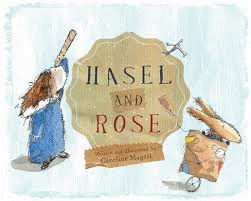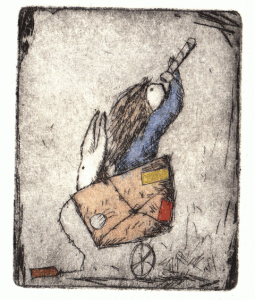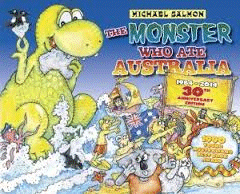Hasel and Rose
Carolyn Magerl
Penguin/Viking 2014
hbk., 32pp., RRP $A24.00
9780670077342
“Rose was a new face in a new street. And there was a new town right outside her window.” What, for some, might be the start of a new adventure filled with anticipation and excitement, for Rose is a descent into loneliness and apprehension. Rose looked out her windows to the stars and wished. But the wish thing which has no name did not come. It did not make it’s away across country sweeping along the powerlines on the great poles that stride across the land; it did not come swept by stormy winds on a parachute. Nothing could bring peace and joy to Rosie’s heart until…
The publisher’s blurb says, “A magical story of hope and new beginnings for anyone who’s ever loved and lost. Hasel and Rose celebrates the power of imagination and resilience, even when things seem too hard,” and it would be difficult to express the theme of this story better. When parents make a decision to move away from all that is familiar, there are many worries and what-ifs that haunt children, often too big for them to articulate and so nothing brings comfort, particularly with the natural impatience of the young. But this story, written by someone who, herself, has experienced dislocation of the familiar and friendly many times and accompanied by her own evocative hand-coloured etchings which add so much atmosphere and tension, offers confirmation that sometimes all it takes is time, and new journeys can happen around any corner.
The journey of the evolution of Hasel and Rose is told by the author on her website and it, in itself, is a remarkable piece of writing because it helps to answer that question that children always ask authors …”Where do you get your ideas from?” Like many stories, it evolved over a long period of time, an idea tickling the edges of the mind until it found a purpose and a pathway to become more. Its crafting and development is as much of a journey as Hasel’s, and that in itself is a most valuable lesson for students and their teachers to learn. Great stories cannot be written to order and a timetable, but need to be nurtured and nourished and allowed to flourish in their own time…just as Rosie did.


